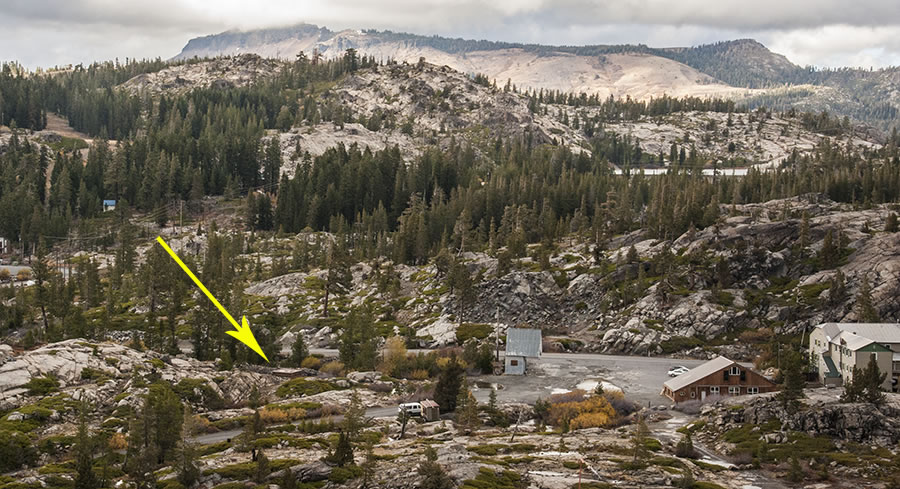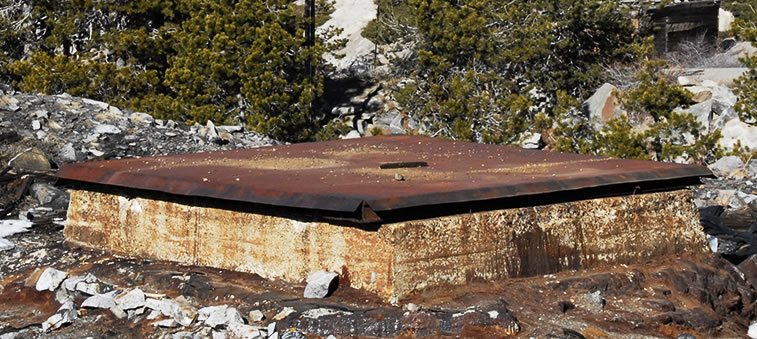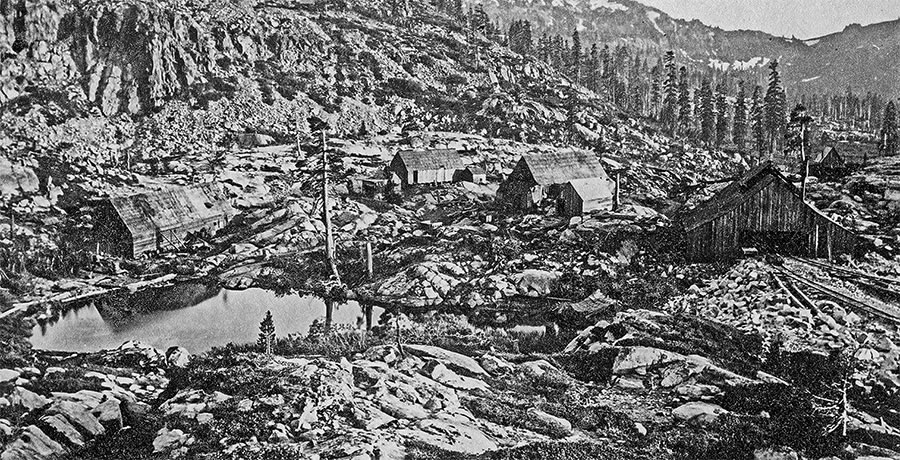
It was a race. The Central Pacific was building the transcontinental railroad from the west and the Union Pacific was building from the east. The Central Pacific had to bring all its materials, track, tools, locomotives, train car parts, etc. around the Horn to California. That was a problem but nowhere near as big a problem as the Sierra. Just as the Sierra was the hardest part of the continental crossing for the emigrants, it was the hardest part for building the railroad. 15 tunnels had to be bored through solid Sierra granite. Ravines needed filling and high spots needed reducing. The Central Pacific was making little progress.
 The Union Pacific was having an easy time. They were earning money from easily laid track. They even taunted the Central Pacific saying they'd get to California before the Central Pacific even got out of the mountains. The Central Pacific was stuck digging tunnels. They were making progress of only inches a day.
The Union Pacific was having an easy time. They were earning money from easily laid track. They even taunted the Central Pacific saying they'd get to California before the Central Pacific even got out of the mountains. The Central Pacific was stuck digging tunnels. They were making progress of only inches a day.
As you are walking up the switchbacks at the beginning of the Judah Loop Trail and get to the end of the second set, pause and catch your breath. While you do, look over the canyon to the strangely shaped gray building in the upper parking lots and then move your eyes left a hundred yards. You'll see the structure at the end of the arrow point above. That's the top of the central shaft of Tunnel 6. The picture immediately above is a close up.
 Making only inches a day of progress, even digging from both ends of Tunnel 6 at once, the Central Pacific decided to bore down through the center and then dig outwards. They'd have four faces going at once. At the top they installed the first locomotive in California with its wheels removed. It was named the Blue Goose and caused such commotion among mules pulling oncoming freight wagons during the six weeks journey from Gold Run, that the mules had to be blindfoled. The Blue Goose worked as a donkey engine. The picture here (Alfred A. Hart #196 Shaft House Over Summit Tunnel, American Pk in the distance - now Mt. Lincoln) shows the top of the central shaft in 1869. The shaft was in front of the right hand structure.
Making only inches a day of progress, even digging from both ends of Tunnel 6 at once, the Central Pacific decided to bore down through the center and then dig outwards. They'd have four faces going at once. At the top they installed the first locomotive in California with its wheels removed. It was named the Blue Goose and caused such commotion among mules pulling oncoming freight wagons during the six weeks journey from Gold Run, that the mules had to be blindfoled. The Blue Goose worked as a donkey engine. The picture here (Alfred A. Hart #196 Shaft House Over Summit Tunnel, American Pk in the distance - now Mt. Lincoln) shows the top of the central shaft in 1869. The shaft was in front of the right hand structure.
Tunnel 6 took two years to excavate. It's 1659 feet long. If you have not gone inside you should. You should have passed one end just as you turned off Old 40 onto Sugar Bowl Rd. It was under the overpass. If you do go inside and get halfway, shine your flashlight up at the central shaft. The top is 89 feet up. Then shine your flashlight at the north wall of the tunnel and look for tool marks left by the Chinese railroad workers 150 years ago. If you walk over to the central shaft top you'll see a monument at the edge of the parking lot.

